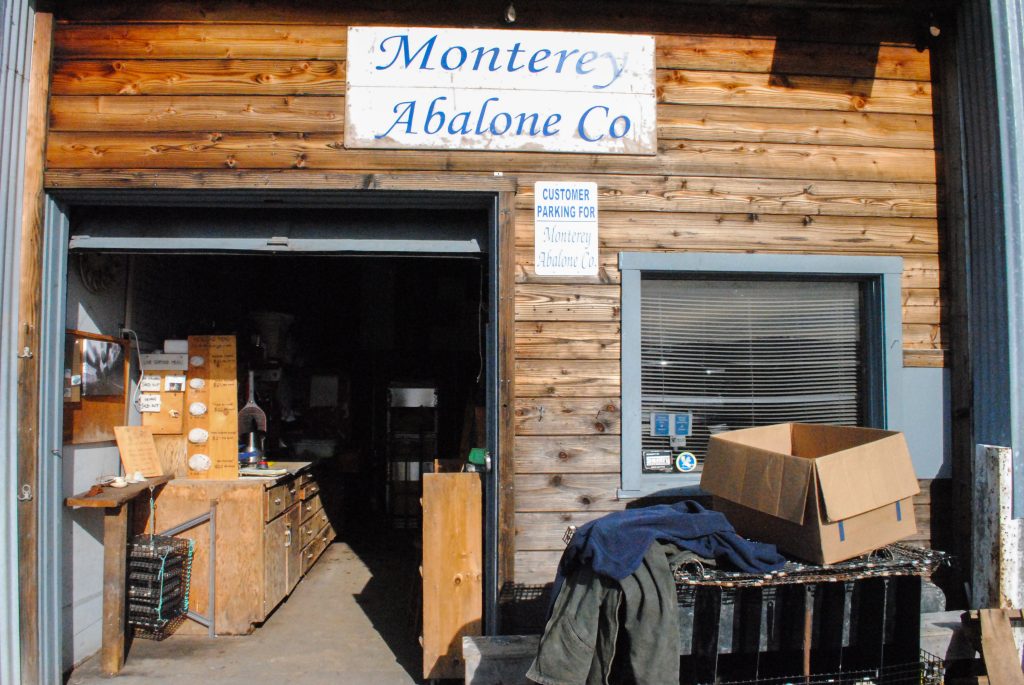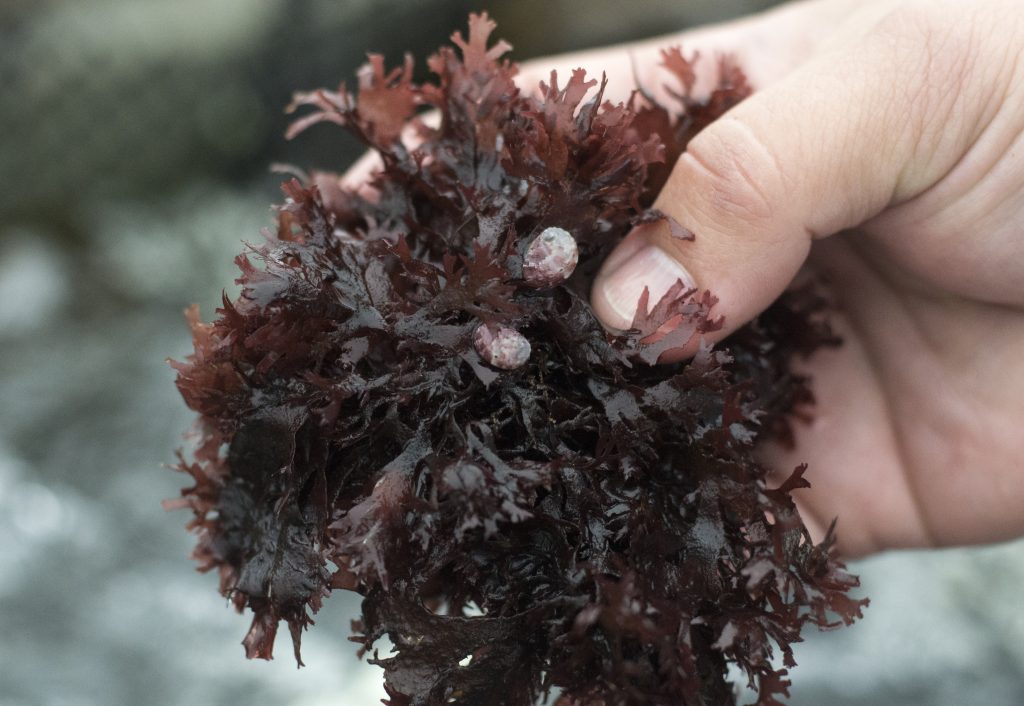Abalone are large marine mollusks – think of a 4 to 12 inch snail with a flatter shell covered in marine growth – and have been used by humans for thousands of years for food and their beautiful opalescent shells. Although they appear cold wet and slimy, abalone are a delicious superfood high in protein, as well as essential vitamins and minerals like vitamin B12, magnesium, iron, vitamin K and selenium.
Once abundant throughout the entirety of the California coast, abalone are now a scarce resource and under threat from changes in the climate. Warming ocean temperatures during the 2000s increased disease in abalone along the California coast and decimated abalone populations. The purple sea urchins, who share and compete with the abalone for algae, were not impacted by the warmer waters and were able to gain an advantage over the abalone.
Another effect of the warmer than usually ocean water was sea star wasting syndrome (SSWS), a disease that kills sea stars by literally dissolving their bodies. According to experts the warm water crippled the sea stars immune system and the pathogen that led to SSWS became wide spread, wiping out the sea star population. Sea stars are a keystone predator that help regulate the amount of kelp grazing species by eating them, and because of SSWS they were unable to suppress purple sea urchins from further encroaching upon the kelp beds.
Without natural predators and competition for food, the purple sea urchin populations exploded and currently blanket the seafloor in what are called, “urchin barrens,” drastically reducing the amount of available kelp in central and northern California.

Today, both the commercial and sport fishery for abalone are closed due to the combining ecological factors that led to the species’s collapse. There are still abalone alive, but their populations have been deemed too small by the California State Department of Fish and Wildlife to be harvested from the wild. The only way to get abalone from California now is to buy them from aquaculture farms like Monterey Abalone Company (MAC).
MAC grows red abalone, the largest species of abalone and marked by the red hues on its shell developed from a diet rich in red algae. Off-bottom cages underneath the second dock at Fisherman’s Wharf in Monterey, keep the abalone suspended in the water column.
“Being under the wharf is an ideal location,” said Matt Hoen, an employee for MAC, “we get to save a lot of money by not needing to pump water over our abalone or regulate temperature, the natural currents do everything for us.”

The cages keep the abalone from escaping and by suspending them from cables the cages are kept off the seabed and do not impact the sensitive marine floor ecosystem. The Seafood Watch program with Monterey Bay Aquarium recommends this type of aquaculture practice as a “Best Choice”.
The culture around marine farming in California places a heavy emphasis on sustainability. “This is the only kind of aquaculture I want to be doing,” said Hoen, who had previously worked at a salmon hatchery in Alaska and surveyed fish bycatch in Oregon, “it has to be sustainable and this is a kind of dream job if you like working in the marine environment.”
In addition to farming abalone, MAC also dives for marine specimens under a special permit to sell the collected organisms to research institutions. “Everyday is something new, I might be hauling up cages to feed abalone on one day, or taking the boat out to harvest kelp, or diving to catch marine creatures, we do it all here,” said Hoen.

Considering the changes coming with climate change, abalone and aquaculture might share some of the same challenges of survival that rely on an in depth understanding of the marine ecosystem. Hoen thinks aquaculture is a growing area in both food production and marine science and says he is going back to school to take graduate classes in aquaculture offered at Moss Landing Marine Laboratories “Aquaculture can only be done well when scientific research is applied, so I think having a scientific background will be a huge asset to anyone trying to get into aquaculture in the future.”

